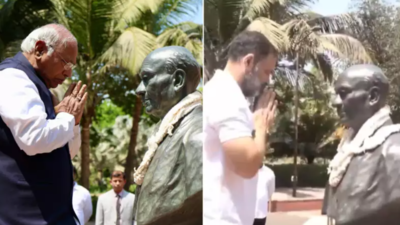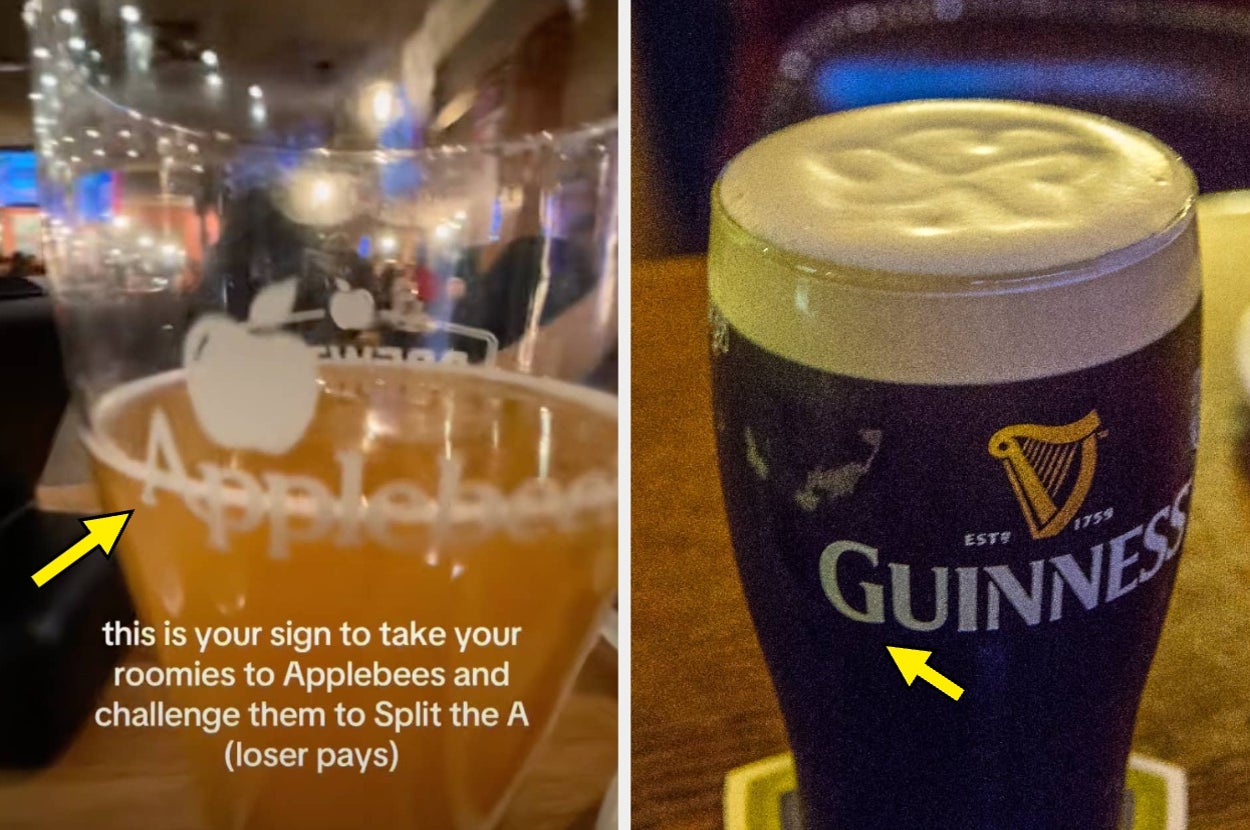LAist reporter Yuzra Farzan has enjoyed iftar, the meal to break the fast during Ramadan, since she was a young child. LAist food editor Gab Chabran had never been to one and was intrigued. They decided to experience it together.
Yusra's love of iftar Ramadan is my favorite time of the year. The holy month, when Muslims fast from sunrise to sunset, means specialty dishes and a time to catch up with friends and family. When I moved to Southern California eight years ago, Ramadan was the first time I felt a little less homesick.

It doesn’t matter if you live in Dubai like I used to, or in Los Angeles, there are some things everyone does. You break your fast with dates or water, read the Qur’an and pray together, and you rarely feel alone in community spaces like mosques or halal restaurants. When Gab told me he had never experienced an iftar, I figured it was about time he went to one.
I wanted to take him to someone’s home, not because the restaurants aren’t great, but because of the hospitality and camaraderie that comes from breaking bread together in a cozy setting. I put out a call to Muslim community leaders asking if there was a family who would like to host us. Sandy and Nasser Hamideh in Rowland Heights generously responded and invited us to their home.
Gab's first impressions Walking up to a large house on a hill inside a cul de sac in Rowland Heights, I didn’t know what to expect other than I would be participating in an iftar dinner. As LAist photographer Julie Leopo and I approached, we noticed a sizeable inflatable lawn decoration that read “Ramadan Mubarak.” I found out later it translates to "Blessed Ramadan.
" Soon after, our host, Nasser, and two of his children came to the door to welcome us. We were led through the house to the backyard, which featured a panoramic view of the snowcapped San Gabriel Mountains and valley at sundown. Bathed in the golden hour light, Nasser invited me to help with the grill.
While we basted the marinated halal lamb chops with olive oil and garlic, he told me about growing up in Rowland Heights. Nasser was born in Palestine, but his family moved to the United States in the late 1970s. Meanwhile his wife, Sandy, was originally from a small Muslim community in Baton Rouge, and had her own version of culture shock when she arrived in California.
As we talked, the smell of the cooked lamb filled the air. Soon after, other guests, including several members of their extended family, arrived. Then a tray of artfully arranged dates magically appeared to break the fast.
They were some of the largest, softest and sweetest dates I’d ever experienced. Yusra's favorite dish After I arrived and broke the fast with dates, we offered the evening prayer together with Muhamad, their son, leading us. It’s a very simple act, but I think praying together is one of the reasons for the feeling of community is heightened during Ramadan.
You would often hear imams commenting about how Ramadan is the one time of the year the mosques are packed with people. And it helped break the ice — their son had memorized one of the longer verses of the Qur’an, one that, alas, my 30-something self still hasn’t (I hope my dad isn’t reading this.) As we sat, bowls of rich yellow lentil soup were served.
The soup — which had hints of olive oil, garlic and carrot — was accompanied with a glass of homemade mint lemonade. I made a beeline for msakhan (which is one of my favorite foods of all time at iftar). I have had the privilege of eating Palestine’s national dish a gazillion times and even make it at home, but Sandy’s was by far the best I have had.
Taboun bread is layered with sumac spiced onions and topped with chicken. The chicken was still moist with a hint of tang — was it lemon, stock, or just well seasoned? But the star was the bread. Sandy’s mother bakes the taboun bread herself and this is key to a good msakhan.
The bread acts as a sponge soaking up all that chicken flavor, as well as the copious amounts of sumac flavored olive oil the onions are fried in. I have had versions with pita bread and naan masquerading as taboun and that just will not do. It has to be taboun.
Sandy had also prepared shatta, a Palestinian chili paste, with sweet peppers, carrots and jalapenos instead of red chilies like it’s typically made because of the kids. This made the lamb chops that Nasser and Gab grilled sing. Vegetables tend to be overlooked on most iftar tables, but Julie, our photographer, is vegan and Sandy made sure to have potatoes, eggplant and cauliflower in a tahini sauce.
My body appreciated the fiber especially after a long day of fasting and my taste buds rejoiced at the nuttiness of the tahini sauce against the fresh tabbouleh salad. Gab's maqluba experience I became a (reluctant) center of attention when the maqluba, a rice pilaf with meat and vegetables, arrived. It's cooked in a pot flipped upside down, and when the dish is done, a person is tasked with holding it and turning it over.
I was elected as the person to take on the task that evening. Everyone crowded around me as I took the two pot holders to slide the plate slowly off the counter onto a large platter, which I then flipped over. I’m not going to lie — I was a little intimidated by the heavy pot full of food, but my efforts were successful.
We were rewarded with the beautifully aromatic rice pilaf, topped with a large sliver of eggplant wrapped around like a large ribbon. Each nook and cranny was stuffed with potatoes, carrots, cauliflower and large chunks of tender meat. Yusra's coffee (and dessert) cravings Meal over — my eyes wandered towards the coffee machine wondering how to politely ask for a cup.
(I drink copious amounts of coffee and after fasting, I need it to keep that caffeine headache at bay.) It’s like Sandy read my mind and soon a steaming mug appeared. The bitterness of the coffee perfectly complimented my all-time Ramadan must-have: qatayef.
Suna brought the thin pancakes stuffed with cheese. With my fork, I made a small crack in the outer shell, and the inside warm cheese immediately oozed out. Gab's heavenly knafeh Another dessert served that night was knafeh from Knafeh Queens .
It contains two layers of spun phyllo dough-like pastry between a helping of stretchy, slightly salty white cheese. The pastry is then doused with sweet syrup and sprinkled with pistachios before serving. We also sampled Imtabak .
The name translates to layers and is made with a phyllo dough with a sweet, salty, heavy cream filling. The flavors of the cream seeped into the corners of the dough, making it all the more heavenly the longer it sat. Yusra's farewell song Coffee, dessert and conversation flowed into the night as Sandy and Nasser’s kids took part in a tradition — similar to an advent calendar.
Over 30 days, in a calendar, Sandy hides riddles for the children to solve and a small treat. She also includes a note with a good deed for the kids to do. I had already announced that I needed to start heading out, when Asad, a cousin, said that he had a song he wanted to play to send us off.
It was a folk song about people being forced to leave their homes and longing for the home they grew up hearing about. When he finished the song, he remarked how he hadn’t sung that song publicly in almost 30 years. At that point, something occurred to me about the evening celebration.
Cultural traditions are a way for us to stay connected to ancestral roots, so we must pass them down to ensure they survive for future generations. I didn’t grow up in Sri Lanka because of the country’s civil war (our family moved to Dubai) and I've wondered what it would have been like. In homes like Sandy’s and Nasser’s and my own, we are holding on to foods, traditions, languages and culture to reinforce our identity and help us carve out a place in this world.
All of us really are just trying to belong. This story was produced with support from the Round Earth Media program of the International Women’s Media Foundation..
Food

The tradition of iftar is thriving in SoCal during Ramadan. Here's what it's like to be at the table

Two LAist colleagues attend iftar to break the Ramadan fast together with a Palestinian family in Rowland Heights.















